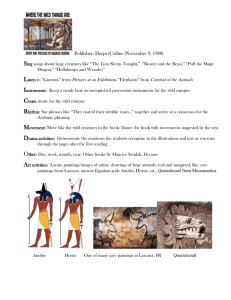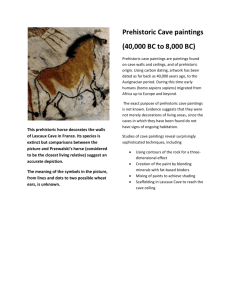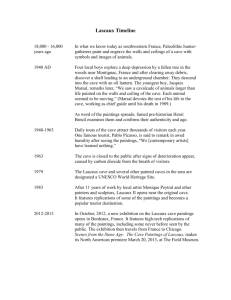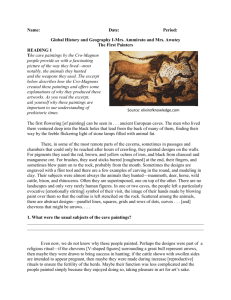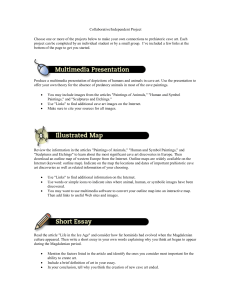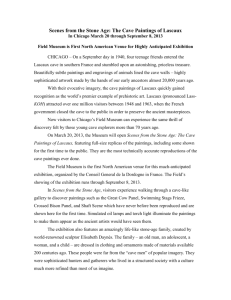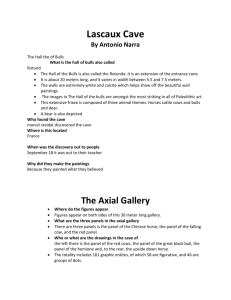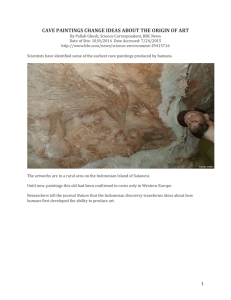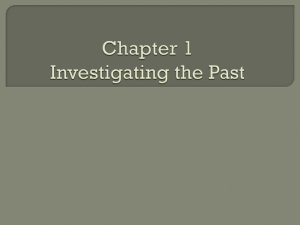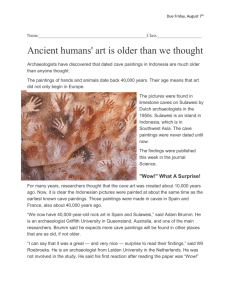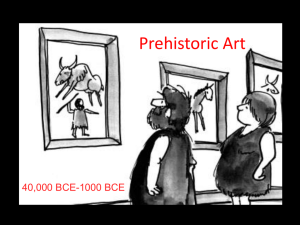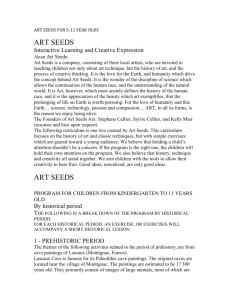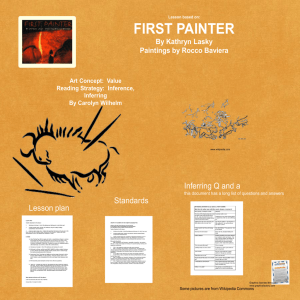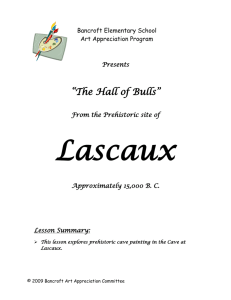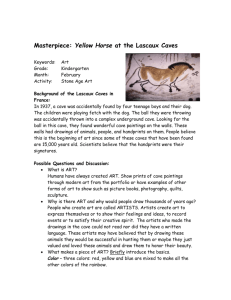Lascaux Conclusions – Making the Masterpieces
advertisement
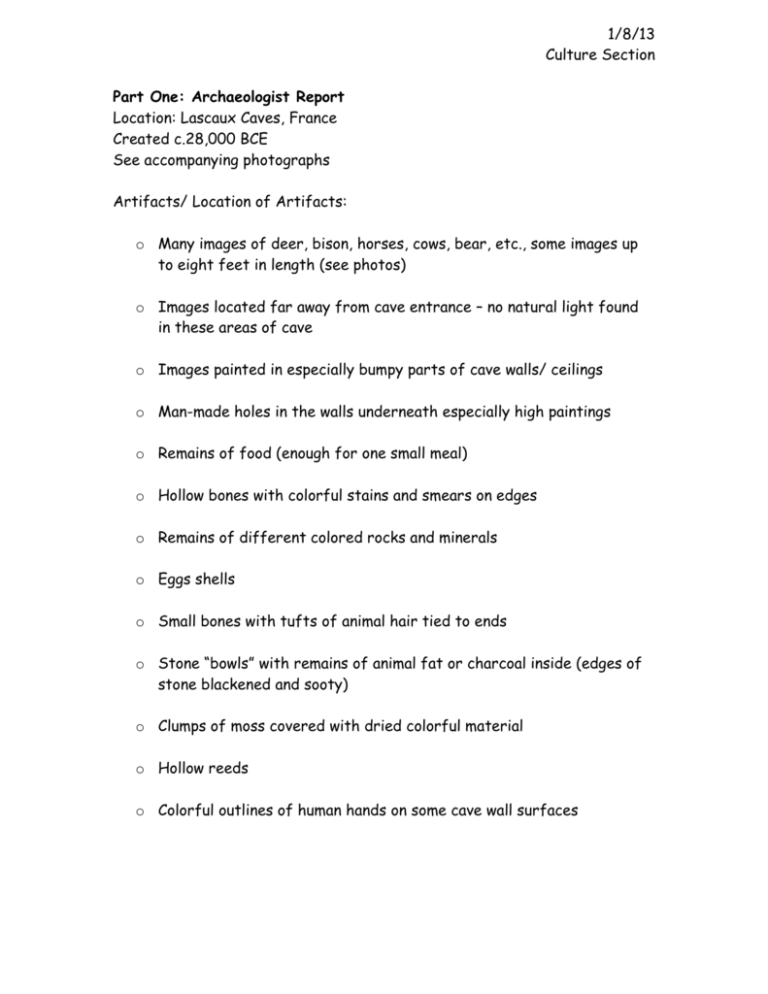
1/8/13 Culture Section Part One: Archaeologist Report Location: Lascaux Caves, France Created c.28,000 BCE See accompanying photographs Artifacts/ Location of Artifacts: o Many images of deer, bison, horses, cows, bear, etc., some images up to eight feet in length (see photos) o Images located far away from cave entrance – no natural light found in these areas of cave o Images painted in especially bumpy parts of cave walls/ ceilings o Man-made holes in the walls underneath especially high paintings o Remains of food (enough for one small meal) o Hollow bones with colorful stains and smears on edges o Remains of different colored rocks and minerals o Eggs shells o Small bones with tufts of animal hair tied to ends o Stone “bowls” with remains of animal fat or charcoal inside (edges of stone blackened and sooty) o Clumps of moss covered with dried colorful material o Hollow reeds o Colorful outlines of human hands on some cave wall surfaces Directions: Using the list of artifacts discovered at the site and the inference skills of your team of archaeologists, please complete the report below to the best of your ability. Use your close up artifact photos to help your decision-making. Lascaux Conclusions – Making the Masterpieces 1. What materials did the artists use to create the paintings? (Think about ALL the material needed to make paintings.) 2. What is the significance of the man-made holes in the walls of the cave? The sooty and blackened stone bowls? 3. “The artists did not normally live in the place where the paintings were found.” Support/ explain this statement based on the evidence and what we know about early human nomads. 4. Is it noteworthy that the paintings were created in certain bumpy areas of the cave wall? Do you think the artists were purposeful in choosing those spots to paint? Part Two: Anthropologist Report Directions: It is now time to switch your archaeologist hat to your anthropologist hat to discover more truths about these images. This part is more difficult because we can never truly know what was going through the minds of the ancient artists or their audience. Anthropologists of the twentieth century have developed some theories that we will review after the Popham 6 anthropologists have had their turn! 1. Please explain the selection of animals the artists painted. (Why did the early Europeans choose to depict those animals?) 2. Is there anything about the life style of these early home sapiens that could relate to the images painted in the caves? 3. Why do you think the artists/ group decided to create the paintings so far back in the caves? 4. When do you think the other members of the clan or group might have seen the paintings? 5. Look at the list of recent Weekly Words on the back board. Does your team think any of these words could be connected to the meanings of the cave paintings? 6. As a group, please describe your theory about the meanings of the cave paintings. Use at least two complete sentences. Established Cave Painting Theories Here are two well-respected theories about the meaning of the cave paintings at Lascaux. We will never know the truth – the real meaning could be a combination of the theories or even something totally different we haven’t thought of yet! However, these two theories are based on years of careful research. Theory Explanation Agree/ Disagree? Why?


